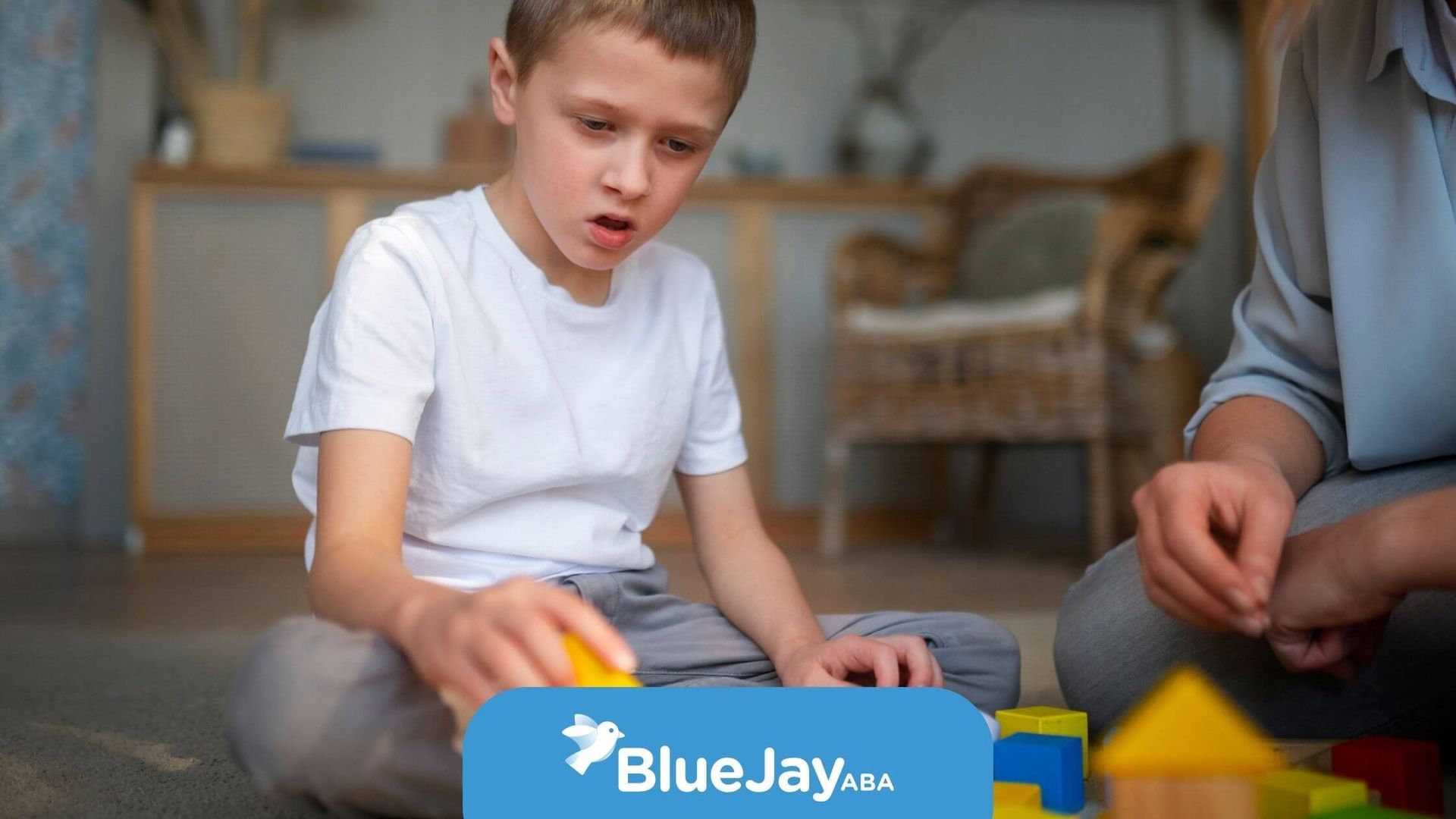ABA Therapy Myths vs. Reality Explained
Applied behavior analysis (ABA) therapy often finds itself surrounded by ABA myths and misconceptions, despite its strong foundation in behavior analysis and proven effectiveness. This evidence-based approach, commonly known as ABA therapy, focuses on understanding how behavior works and how it can be changed through positive reinforcement. It's about fostering positive change and equipping individuals with valuable skills for a fulfilling life.
Understanding ABA Therapy Beyond Autism
While ABA therapy is widely recognized for its positive impact on autistic children, its applications extend far beyond autism spectrum disorder. The principles of ABA hold relevance for various populations facing different challenges.
From addressing behavioral difficulties to improving social interactions and building communication skills and life skills, ABA therapy provides a framework for positive change across various aspects of life, benefiting individuals of all ages and backgrounds.
Applications of ABA in various fields
The use of ABA isn't limited to specific age groups or diagnoses. Its principles have been successfully applied in various fields and settings, proving its versatility as an effective therapy.
In educational environments, ABA aids in shaping positive behaviors, improving academic engagement, and teaching social skills to students with and without learning differences. Moreover, ABA techniques have gained traction in workplaces to enhance productivity, communication, and teamwork.
This widespread application stems from ABA's adaptability. It centers on understanding the individual's needs and tailoring interventions to achieve meaningful outcomes irrespective of the setting.
Effectiveness for different developmental disabilities
ABA therapy proves particularly valuable for individuals with developmental disabilities. Early intervention programs employing ABA principles have demonstrated remarkable success in helping children acquire essential skills, fostering their development and independence.
By breaking down complex tasks into smaller, manageable steps and using positive reinforcement to encourage desired behavior, ABA empowers individuals to learn at their own pace and build confidence in their abilities.
This approach not only enhances communication and social skills but also equips individuals with practical life skills, improving their overall quality of life and fostering greater independence as they grow.
Shifting from Compliance to Empowerment in ABA
One of the most persistent misconceptions about ABA therapy is its perceived focus on compliance and control. Modern ABA, however, prioritizes empowerment and building independence in individuals.
The goal is not to force obedience but to equip individuals with the skills and confidence to communicate their needs, make choices, and navigate their world with greater autonomy.
Modern ABA's focus on independence and self-confidence
Modern ABA therapy centers around fostering genuine progress, supported by a dedicated team. This starts with celebrating every milestone and recognizing individual strengths to build self-confidence. As individuals experience these small victories, they become more self-assured and motivated to take on new challenges.
Furthermore, modern ABA emphasizes teaching functional skills that directly translate to greater independence in everyday life, including the development of socially significant behaviors. These skills could range from communicating effectively to managing daily routines and engaging in social situations with confidence.
By empowering individuals to advocate for themselves, make choices, and actively participate in their lives, modern ABA helps them cultivate meaningful relationships and pursue their aspirations with a sense of autonomy.
Teaching functional skills through positive reinforcement
Positive reinforcement forms a cornerstone of ABA therapy. Rather than resorting to aversive techniques or punishment, ABA programs utilize positive reinforcement techniques to motivate and encourage desired behavior. This might involve praise, rewards, or access to preferred activities, making the learning process enjoyable and rewarding for the individual.
The focus on positive reinforcement extends beyond simply rewarding good behavior; it emphasizes building intrinsic motivation. As individuals witness the positive outcomes of their actions, they develop a sense of ownership over their progress, leading to long-term behavioral changes.
By emphasizing positive reinforcement and functional skills, ABA helps individuals gain not just skills but also confidence in their abilities, leading to greater independence and a higher quality of life.
Addressing the Myth of "Robotic" Behaviors in ABA
Another prevalent misconception portrays ABA therapy as promoting robotic or unnatural behavior. This misconception often stems from outdated methods or a limited understanding of modern ABA.
Contemporary ABA prioritizes natural, play-based learning experiences that foster genuine social interaction and emotional development. It recognizes that true progress lies in nurturing well-rounded individuals, not in creating a semblance of compliance.
Use of naturalistic teaching strategies
Contrary to common myths about ABA, modern practices often revolve around naturalistic teaching strategies. These strategies integrate learning seamlessly into everyday routines and natural environments. Instead of structured drills, ABA therapists utilize play, social interactions, and real-life scenarios to teach social skills, communication, and other essential abilities.
This naturalistic approach fosters generalization, ensuring that the skills learned during therapy sessions effortlessly translate to various real-life situations. For instance, instead of teaching a child to request a toy at a table, a therapist might create opportunities during playtime to encourage this skill naturally.
By mirroring real-world contexts, naturalistic teaching strategies employed in ABA not only make learning engaging but also help individuals develop flexible, adaptable skills that empower them to navigate their social world confidently.
Importance of tailored treatment plans in ABA
Dismissing the one-size-fits-all approach, ABA emphasizes tailoring treatment plans to meet the child’s needs, strengths, and challenges. This involves a deep understanding of the individual's personality, learning style, preferences, and goals.
Before initiating therapy, a comprehensive assessment identifies the individual's specific challenges and aspirations. Based on this assessment, a personalized treatment plan is meticulously crafted, outlining goals, strategies, and interventions.
| Aspect | Description |
|---|---|
| Assessment | Identifying individual needs, strengths, challenges, and goals through observation, interviews, and standardized assessments. |
| Goal Setting | Collaborating with the individual and their family to establish clear, measurable, and meaningful objectives specific to their needs and aspirations. |
| Intervention Strategies | Selecting evidence-based ABA techniques tailored to the individual's learning style, preferences, and goals (e.g., Naturalistic Teaching Strategies, Discrete Trial Training). |
| Progress Monitoring and Evaluation | Regularly reviewing the individual's progress through data collection and analysis, adjusting the treatment plan as needed to ensure its effectiveness and relevance. |
Conclusion
In conclusion, debunking misconceptions about ABA therapy is essential for understanding its wide applications beyond autism. Modern ABA focuses on empowerment, teaching individual’s independence, and fostering self-confidence through tailored treatment plans. By emphasizing naturalistic teaching strategies and positive reinforcement, ABA helps individuals with various developmental disabilities gain functional skills. It's time to shift the narrative from robotic behaviors to a more holistic approach that promotes individual growth and well-being.
Understanding the true essence of ABA therapy can lead to positive outcomes across different fields and empower individuals to reach their full potential. If you have any questions or seek further clarity, feel free to explore our FAQs section.
At Blue Jay ABA, we’re committed to providing transparent and effective ABA therapy that truly supports the unique needs of individuals with autism. Many myths surround ABA therapy, but we focus on the reality: personalized, evidence-based strategies that promote lasting behavior change and skill development. Our compassionate team works closely with families to ensure that each therapy plan is tailored to the child’s specific goals, empowering them to reach their full potential.
Ready to experience the proven benefits of ABA therapy? Contact Blue Jay ABA today to begin your child’s transformative journey!
Frequently Asked Questions
How does ABA therapy differ for non-autistic individuals?
ABA therapy for non-autistic individuals utilizes the same core principles, but goals often differ. Instead of focusing on autism-specific challenges, it may address issues like behavioral rigidity, social interactions, or learning complex skills, always tailoring the approach to individual needs.
What are some examples of positive reinforcement in ABA?
ABA programs use positive reinforcement to encourage desired behavior. This might include verbal praise for appropriate behaviors, a small toy for completing a task, or a short break after demonstrating new skills. The key is to find what motivates the individual and use it consistently to reinforce progress.
Related Posts






